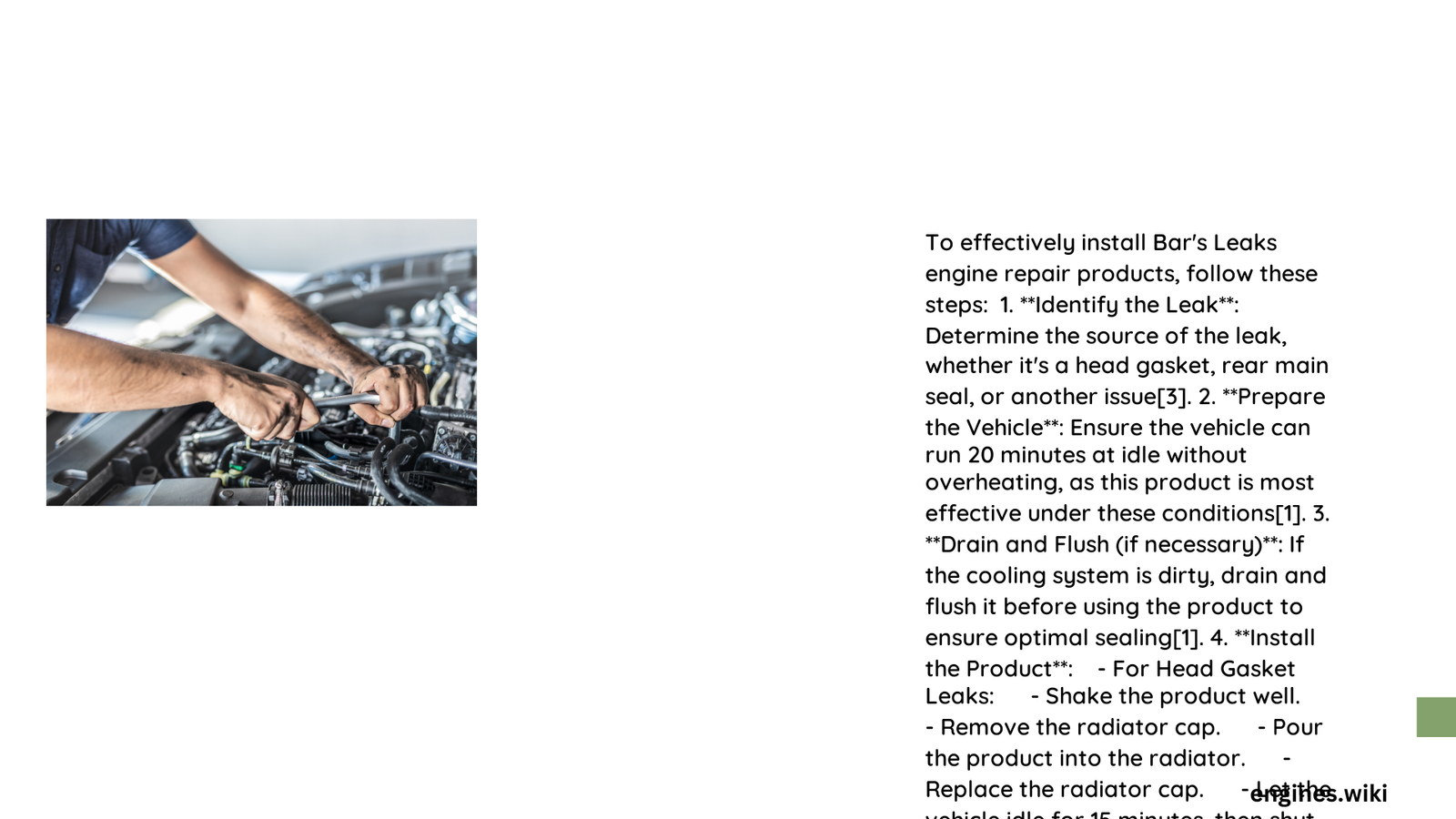Bars Leaks engine repair is a critical solution for automotive cooling system maintenance, designed to seal small leaks and prevent potential engine damage. Vehicle owners facing coolant system issues can effectively apply this product directly into the radiator or coolant reservoir, following specific guidelines to ensure optimal performance and prevent further complications.
What Are the Primary Locations for Bars Leaks Application?
Radiator Application Method
When applying Bars Leaks engine repair, the radiator serves as the primary entry point for the product. Here’s a detailed breakdown of the application process:
| Location | Application Technique | Considerations |
|---|---|---|
| Radiator Cap | Direct pour | Ensure engine is completely cool |
| Coolant Reservoir | Alternative entry point | Use when radiator access is limited |
Preparation Steps
- Safety First
- Wear protective gloves
- Use eye protection
-
Ensure engine temperature is ambient
-
Product Measurement
- 6-cylinder engines: Use full bottle
- 3-4 cylinder engines: Use half bottle
- Shake product thoroughly before application
How to Determine the Correct Application Location?
Vehicle cooling systems vary, so identifying the correct application point is crucial:
- Modern Vehicles: Often have a separate coolant reservoir
- Older Models: May require direct radiator application
- Check Vehicle Manual: Confirm specific cooling system configuration
What Symptoms Indicate Need for Bars Leaks?
Recognizing potential cooling system issues helps determine when to apply the product:
- Persistent coolant loss
- Unexplained overheating
- Visible minor leaks around radiator or hoses
- Temperature gauge fluctuations
Step-by-Step Application Process
Detailed Application Instructions
- Cool Down Engine
- Park vehicle on level ground
- Allow engine to reach ambient temperature
-
Never open radiator cap on hot engine
-
Locate Application Point
- Identify radiator or coolant reservoir
- Remove cap carefully
-
Use funnel if needed to prevent spills
-
Product Introduction
- Pour Bars Leaks slowly
- Ensure proper quantity based on engine size
-
Avoid overfilling
-
System Circulation
- Replace radiator/reservoir cap
- Start engine
- Allow 15-20 minutes idle or short drive
What Precautions Should Be Taken?
- Compatibility Check
- Verify product suitability for specific engine type
- Confirm existing coolant composition
-
Avoid mixing incompatible coolant types
-
Performance Monitoring
- Check coolant levels after application
- Monitor engine temperature
- Watch for continued leakage
Technical Considerations
When to Seek Professional Help
- Severe leaks beyond product capability
- Persistent cooling system issues
- Suspected major mechanical damage
Expert Tips
- Always follow manufacturer’s instructions
- Use appropriate protective equipment
- Perform regular cooling system maintenance
Potential Limitations
- Not suitable for extensive mechanical damage
- May not resolve complex cooling system failures
- Temporary solution for minor leaks
Conclusion

Proper application of Bars Leaks engine repair requires careful consideration of vehicle specifications, cooling system configuration, and specific leak characteristics. By following systematic guidelines and understanding product limitations, vehicle owners can effectively address minor cooling system issues.
